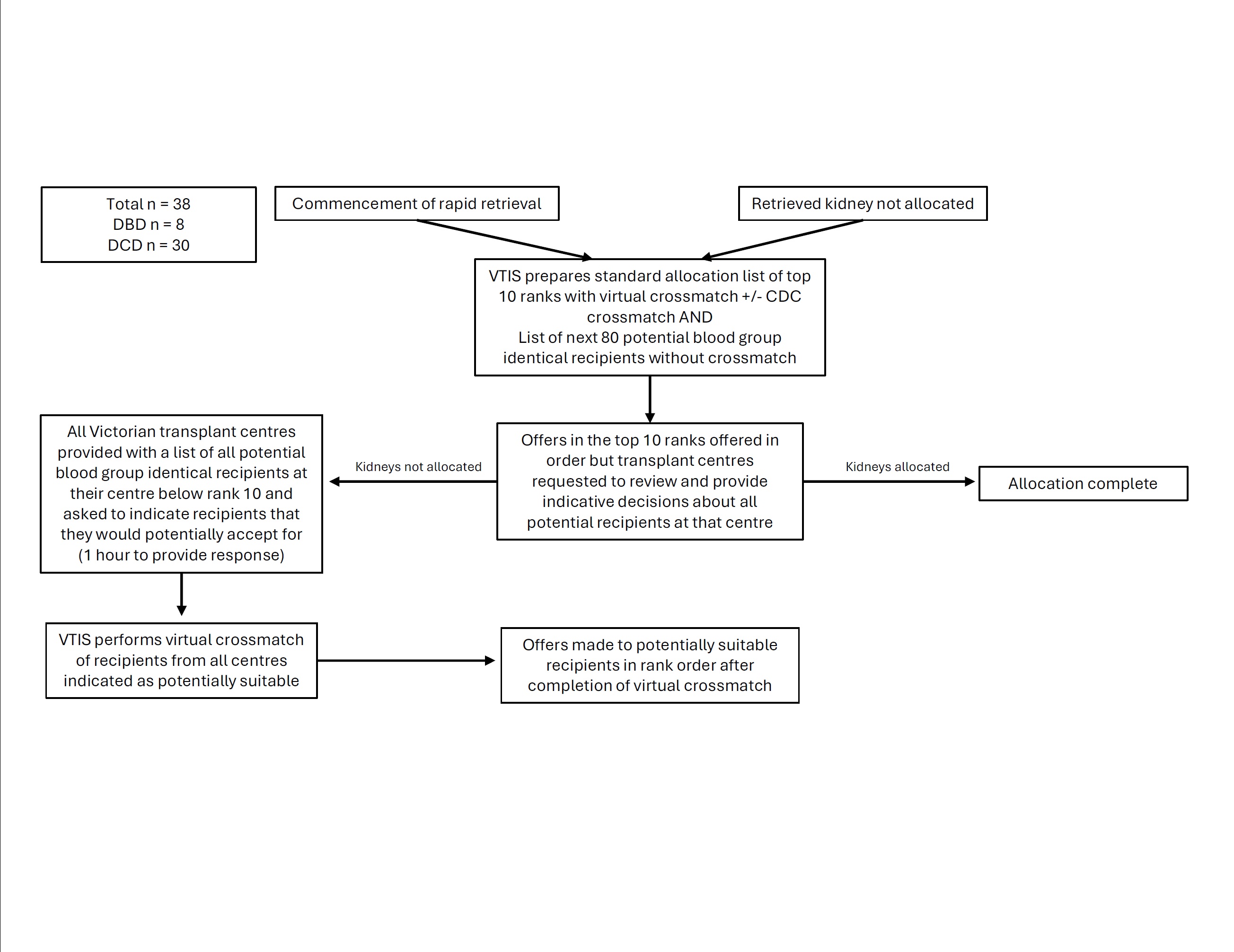Implementation of a statewide allocation system for deceased donor kidneys at risk of prolonged cold ischaemia in Victoria Australia
Kevin V Chow1,2, Nina Seng3, Fiona Hudson4, Gopal Basu5,6, Kathy Paizis7, Darren Lee7,8.
1Nephrology, Melbourne Health, Parkville, Australia; 2Medicine, Dentistry and Health Sciences, University of Melbourne, Parkville, Australia; 3Donatelife Victoria, Carlton, Australia; 4Victorian Transplantation and Immunogenetics Service, West Melbourne, Australia; 5Renal Medicine, The Alfred, Melbourne, Australia; 6Central Clinical School, Monash University, Melbourne, Australia; 7Nephrology, Austin Health, Heidelberg, Australia; 8Renal Medicine, Eastern Health Clinical School, Monash University, Box Hill, Australia
Aims: In July 2022, a novel expedited allocation system was implemented in Victoria, Australia, for deceased donor kidneys at risk of non-utilisation due to prolonged cold ischaemia. This is activated whenever: a rapid retrieval commences, or a retrieved kidney has not been allocated, triggering simultaneous indicative offers made to all Victorian kidney transplant units, before availability of virtual crossmatch results (Figure 1). We aim to investigate the performance since its implementation.
Methods: We examined the characteristics, allocation efficiency and utilisation rates of donor kidneys offered through this expedited system from July 2022 to December 2024.
Results: The system was activated involving 38 donors (rapid retrieval n=24, retrieved kidney(s) not allocated n=11, donor marginality (beyond originally intended scope) n=3). Median donor age was 58 years (IQR 38-63) while KDPI was 82 (IQR 52-92). Of 58 kidneys suitable to offer, 49 were initially accepted with 11 later deemed unsuitable by the receiving transplant centre (donor factors n=10, recipient factors n=1) and unable to be reallocated, resulting in 38 kidneys (66%) being ultimately transplanted. Of the accepted kidneys, recipient ranks ranged from 1 to 159 (median 9; IQR 2, 46). Time from commencement of offers until final allocation ranged from 0.8 to 14.5 hours (median 3.3; IQR 1.4 ,7.1).
Conclusion: Implementation of an expedited allocation system for deceased donor kidneys historically at risk of non-utilisation in Victoria demonstrated successful allocation and transplantation of 66% of offered kidneys in a time efficient manner. Possible expansion of its use for other difficult-to-allocate kidneys is being evaluated.

[1] Organ allocation
[2] Expedited
[3] Kidney transplantation